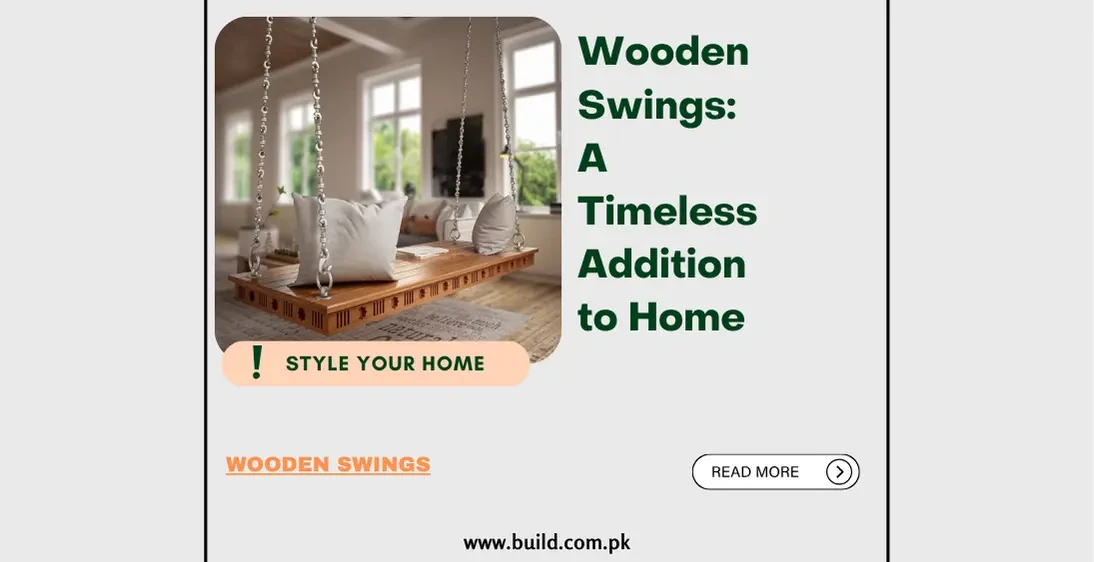Wooden Swings: A Timeless Addition to Home

Introduction:
Imagine the peaceful atmosphere of your home adorned with a
beautiful wooden swing, offering a serene retreat where you can unwind and
enjoy moments of tranquility. Wooden swings are not just pieces of furniture;
they are symbols of timeless charm and natural elegance. Let's delve deeper
into the world of wooden swings, exploring their benefits, various types,
potential drawbacks, and important considerations when choosing one for your
home.
Understanding Wooden Swings:
Wooden swings are classic pieces
of furniture designed for both indoor and outdoor use. They are typically
crafted from sturdy hardwoods like teak, cedar, or oak, known for their
durability and aesthetic appeal. These swings are suspended by chains or ropes,
allowing for a gentle rocking motion that promotes relaxation.
Benefits of Wooden Swings
Wooden swings bring a multitude of benefits that contribute
to their enduring popularity:
Timeless Charm:
Wooden swings exude a classic, rustic charm
that enhances the aesthetic appeal of any home. They seamlessly blend with
various architectural styles, from traditional to contemporary, adding a touch
of warmth and character.
Versatility:
Available in a diverse range of designs and
sizes, wooden swings offer versatile seating options for both indoor and
outdoor spaces. Whether you prefer a large porch swing, a quaint garden swing,
or a cozy indoor swing, there's a wooden option to suit every setting.
Durability:
High-quality wooden swings are built to last.
Crafted from sturdy hardwoods like teak, cedar, or oak, they are naturally
resistant to weathering and can withstand outdoor elements, making them ideal for
long-term use.
Connection with Nature:
Placing a wooden swing outdoors
creates a tranquil oasis where you can reconnect with nature. It provides a
perfect spot to relax, unwind, and appreciate the beauty of your surroundings.
Types of Wooden Swings
Explore the diverse world of wooden swings and their unique
characteristics:
Porch Swings:
These larger swings are typically designed to
be installed on porches or verandas, providing ample seating space for relaxing
outdoors. Porch swings often feature classic designs and can accommodate
multiple people comfortably.
Garden Swings:
Smaller and more decorative, garden swings are
perfect for adding a touch of charm to outdoor spaces like gardens, patios, or
courtyards. They may incorporate intricate details such as carved accents or
lattice panels, enhancing their visual appeal.
Indoor Swings:
Designed specifically for indoor use, indoor
swings offer a cozy and unconventional seating option within your home. They
can be installed in living rooms, bedrooms, or even enclosed sunrooms, creating
inviting nooks for relaxation and leisure.
Disadvantages of Wooden Swings
While wooden swings offer numerous advantages, it's essential
to consider potential drawbacks:
Maintenance:
Wooden swings require regular maintenance to preserve
their beauty and integrity. This includes periodic sealing or staining to
protect against moisture, sun exposure, and other environmental factors.
Cost:
High-quality wooden swings can be more expensive than
swings made from alternative materials. However, they often justify the
investment with their durability and timeless appeal.
Weight and Installation:
Solid wood swings can be heavy,
requiring proper installation to ensure stability and safety. Adequate support
and anchoring are essential, especially for larger swings.
Considerations When Choosing a Wooden Swing
When selecting a wooden swing for your home, keep these
important considerations in mind:
Quality of Wood:
Opt for durable hardwoods known for their
resilience and weather resistance, such as teak or cedar. High-quality
materials will ensure longevity and minimize maintenance needs.
Size and Space:
Consider the available space where you plan
to install the swing. Choose a size and design that harmonizes with your
surroundings without overpowering the area.
Installation and Safety:
Ensure proper installation by
following manufacturer guidelines and using appropriate hardware. Consider
factors like weight capacity and structural integrity to guarantee safety
during use.
Maintenance Requirements:
Be prepared to dedicate time and
effort to maintain your wooden swing. Regular cleaning, sealing, and protective
treatments will extend its lifespan and preserve its natural beauty.
Factors to Keep in Mind
Climate: Choose a wooden swing that can withstand the climate
conditions in your area, considering factors like moisture and temperature
fluctuations.
Design and Style: Select a swing that complements your home's
aesthetic and reflects your personal taste and preferences.
Safety: Prioritize safety during installation and use,
especially if children or elderly individuals will be using the swing.
Conclusion
In conclusion, a wooden swing is more than just a piece of furniture—it's an embodiment of timeless elegance and relaxation. Whether adorning your porch, garden, or indoor space, a wooden swing adds charm and functionality to your home. By understanding their benefits, exploring different types, acknowledging potential disadvantages, and considering essential factors when choosing one, you can make an informed decision that enhances your living environment. Embrace the allure of a wooden swing and create lasting memories of comfort and serenity in your home. Happy swinging!









